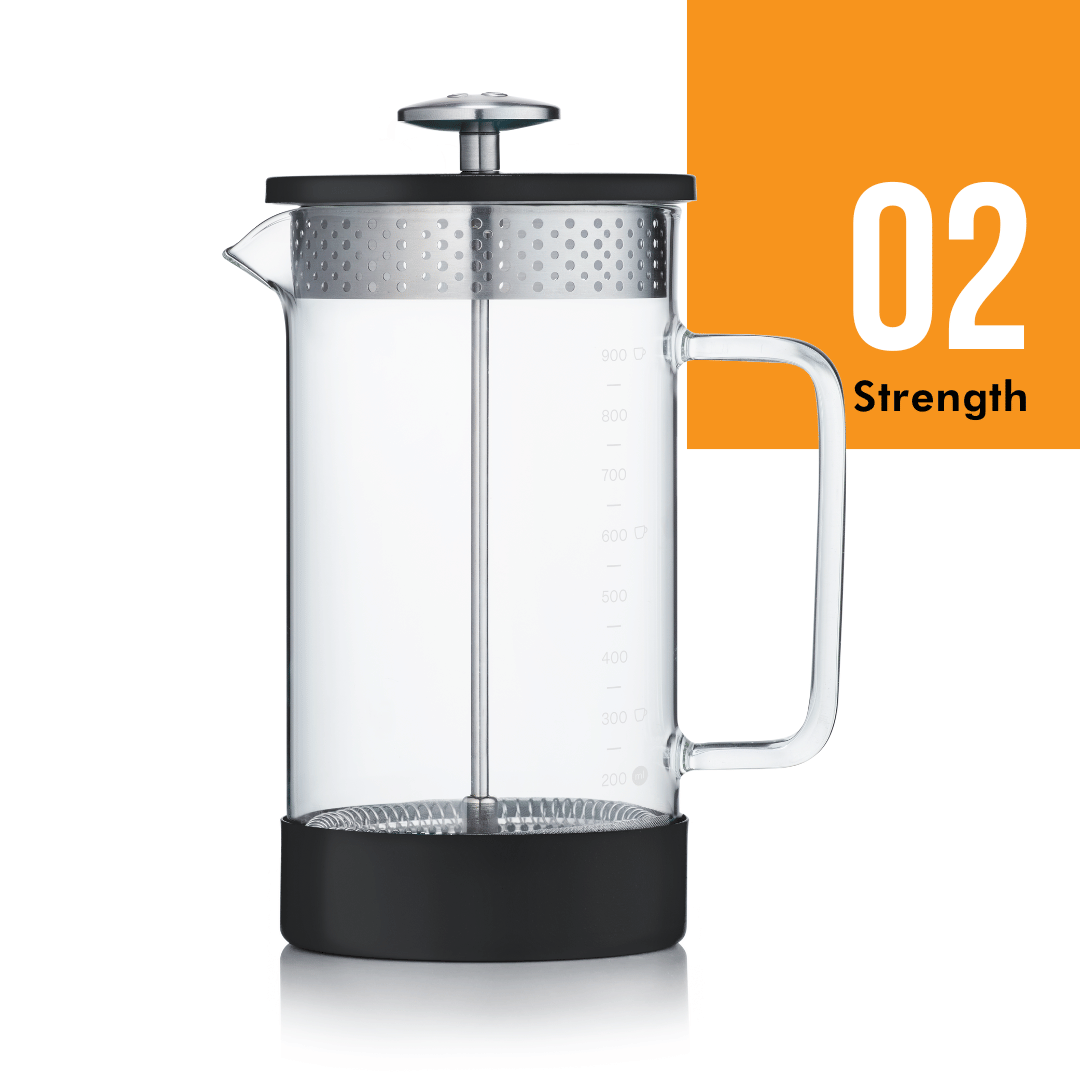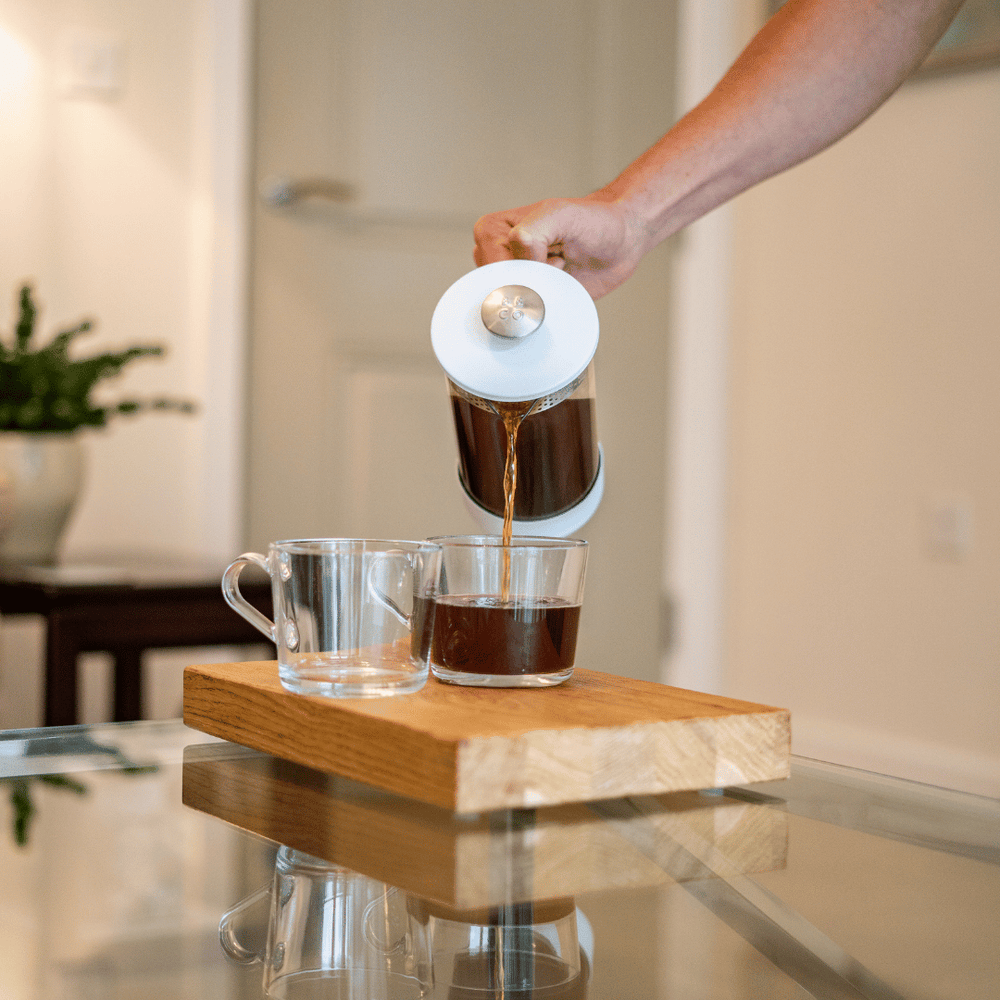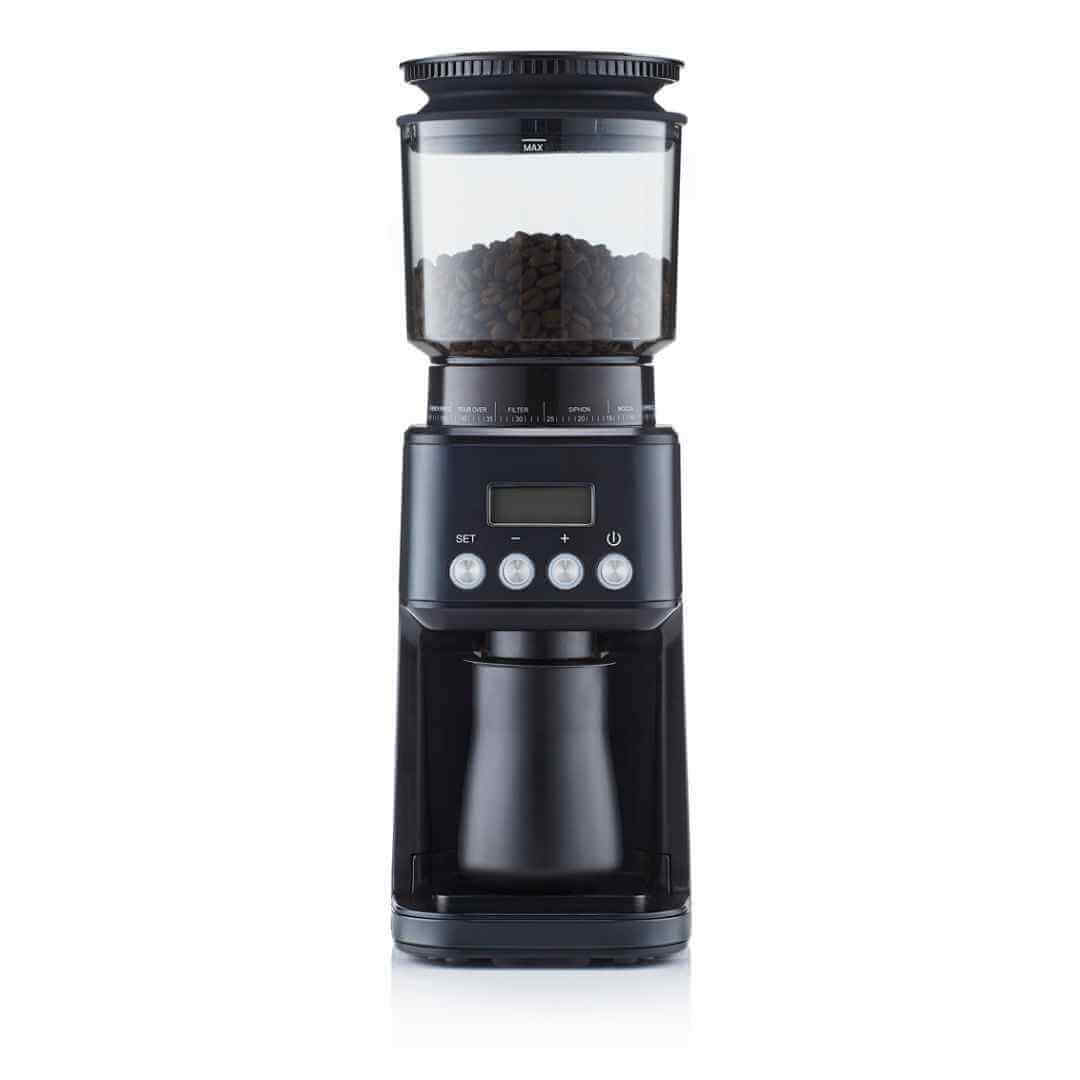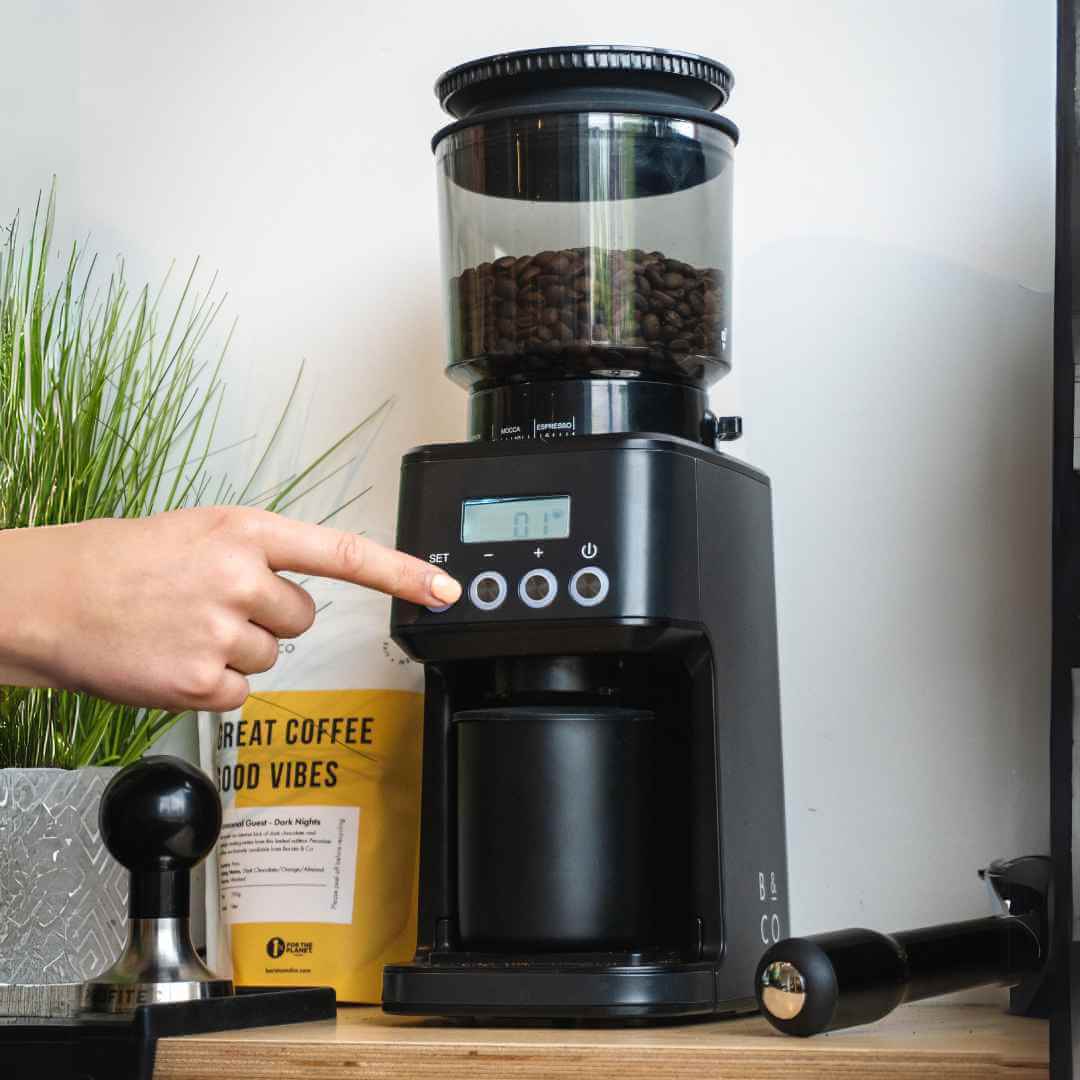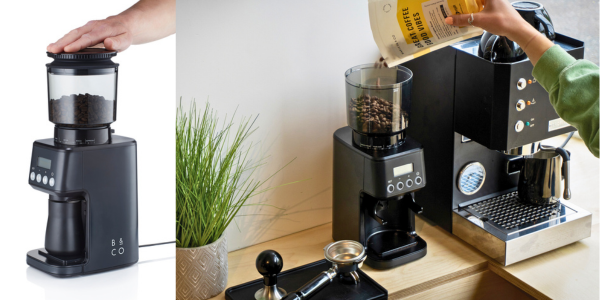bco coffee makers
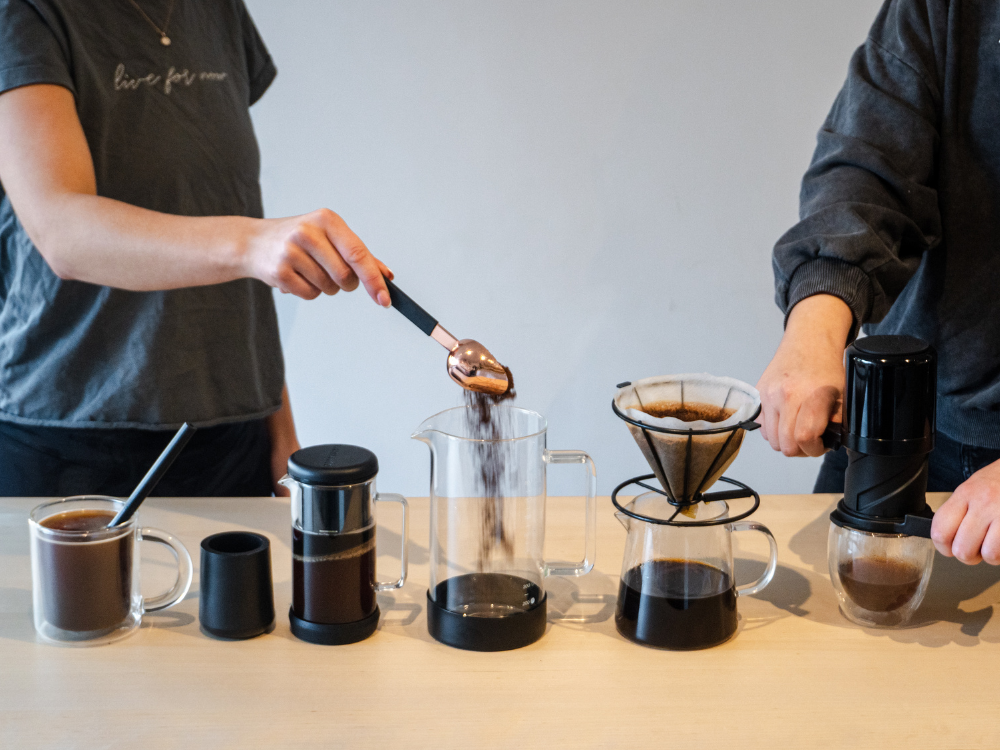
Let customers speak for us
Frequently Asked Questions about our bco coffee makers
For 10 years, we've asked one question... How do you take yours? As it turns out, not a single person has ever told us whether they prefer a light or heavy bodied drink. No one's every mentioned mouthfeel. Bitterness comes up a small amount, but there's one thing you all seem to care about when it comes to your coffee maker. Strength.
The Barista & Co Brew Guide is a collection of coffee makers that sit along a strength scale. We've designed them this way to make it easier for you to find the product that makes the type of coffee you enjoy.



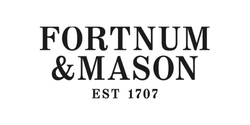

Love it’s plastic free great quality and stylish
perfect for gifting!
I love my Brew It stick and have had it for a few years, used daily and still going strong. It causes many giggles in the office as people think I have brought along my mini toilet brush. It fits in lunch box or hand bag and I would not be without it!
Lovely coffee pod holder that holds 2 full boxes of nespresso pods, looks really chic and non bulky
I'm so pleased to have found a plastic free cafetiere and this one makes excellent coffee. The beaker arrived slightly scratched and Barista & Co replaced it incredibly quickly. Very impressed both with the quality of the product and the customer service. Thank you!
Filter easy to use and clean - all works well - good delivery
I bought this to use at work instead of drinking dire instant coffee. If you follow their instructions, it makes a great cup of coffee. I'm very happy with mine. Super easy to use, and super easy to clean. No paper filters, so apart from the price of coffee, there's no ongoing costs.
The best coffee I’ve ever had
Brilliant coffee grinder. Really pleased with it.
Great product, Recipient very pleased.
Recién comencé a usarlo, me incomoda un poco que flote porque me obliga a quedarme ahí pues siento que no se extrae lo suficiente si está flotando, también me gustaría saber como tapar el orificio ya que lo recomiendan para aumentar la intensidad del café
Best coffee I’ve ever had
I bought this brewing stick for work and it is terrific! The first time I used it I just stirred the stick in the cup and wondered why it wasn't very strong. After reading the instructions properly for the next cup, I twizzled it for 30 seconds, left it for 8 minutes, then stirred and popped it into the little beaker. Wonderful and much stronger! Perfect! I can definitely recommend it.
I have had this grinder for over 6 months and I have found it perfect it has worked hard for me and easy to clean no mess when grinding, nice size and works really well. I can not recommend it enough, the product is really good quality and the price is good so if you love your coffee and want that fresh ground aroma and taste, I say go for it.
Also just one last thing I found Barista & Co a nice company to deal with also I did have some questions when I purchased it and they were very nice and helpful so thank you Barista &Co
Great that I can get a replacement, even though the product is discontinued. Arrived well packaged and exact replacement for the one I accidentally broke. Little on the expensive side, but still a good option compared to alternatives as this frother is good!
Rocket Man espresso, in a bean to cup machine, strikes a perfect balance for an enjoyable cup in the morning or after dinner.
Elevate your coffee experience with our exceptional selection of filter coffee makers, ideal for those who appreciate the art of crafting a perfect cup. Discover the strength you crave with our robust collection of strong coffee makers. Dive into the rich flavours of freshly brewed coffee using our chic cafetières. For the connoisseurs seeking precision, explore our pour-over coffee makers – the epitome of brewing perfection. Elevate your coffee game, one brew at a time.
When using a filter coffee maker, the choice of coffee beans and their characteristics can significantly impact the flavour of your brewed coffee. Here are some general guidelines:
Coffee Beans:
Choose high-quality, freshly roasted coffee beans. The origin of the beans and their flavour profile can influence the final taste. You might consider single-origin beans for a unique and nuanced flavour, or a blend for a more balanced cup.
Grind Size:
For a filter coffee maker, use a medium-coarse grind. This grind size allows for optimal extraction during the brewing process. If the grind is too fine, it can result in over-extraction, leading to bitterness. If it's too coarse, the coffee may taste weak.
Roast Profile:
Light Roast: Ideal if you enjoy black coffee and prefer a more acidic and nuanced flavour profile. Light roasts often highlight the unique characteristics of the coffee beans.
Medium Roast: Suitable for those who prefer a balanced cup that's not overly acidic or sweet. Medium roasts retain a good amount of the bean's original flavours while introducing some roast characteristics.
Dark Roast: If you enjoy bold, intense, and bitter flavours, a dark roast is the way to go. Dark roasts often have a more pronounced body and lower acidity. However, note that the original bean flavours are often masked by the roasting process.
Additional Tips:
Always use freshly ground coffee for the best flavour.
Ensure that your coffee-to-water ratio is appropriate for your taste preferences.
Experiment with different beans and roast profiles to find your perfect cup.
Remember that personal taste plays a crucial role, so feel free to adjust these recommendations based on your preferences. Additionally, coffee brewing is a delightful journey of exploration, so don't hesitate to try various beans and methods to discover what suits your palate best.
The primary differences between filter coffee and espresso lie in the brewing method, grind size, brewing time, and resulting flavour profile. Here's a breakdown of the distinctions:
Brewing Method:
Filter Coffee: Typically made using a drip coffee maker, pour-over method, or a French press. Hot water is poured over coarsely ground coffee beans, and the liquid slowly drips or steeps through a filter or mesh, extracting flavours along the way.
Espresso: Brewed by forcing hot pressurized water through finely-ground coffee. This method results in a concentrated and rich coffee shot.
Grind Size:
Filter Coffee: Requires a coarser grind to allow water to flow through the coffee grounds at a slower pace, extracting flavours more gradually.
Espresso: Requires a very fine grind to maximize the extraction of flavours during the short brewing time.
Brewing Time:
Filter Coffee: Typically has a longer brewing time, allowing for a more extended extraction process, often several minutes.
Espresso: Brewed quickly, usually taking about 25 to 30 seconds.
Pressure:
Filter Coffee: Brewed without pressure. The water flows through the coffee grounds due to gravity or minimal pressure applied by the brewing device.
Espresso: Brewed under high pressure, usually around 9 bars, which quickly extracts the coffee flavours and creates the characteristic crema on top.
Flavour Profile:
Filter Coffee: Generally has a milder and more nuanced flavour. The slower extraction process allows for a well-balanced cup with distinct notes from the coffee beans.
Espresso: Offers a concentrated and bold flavour with a thicker texture. The high-pressure brewing process extracts oils and compounds that contribute to a rich and intense taste.
Volume:
Filter Coffee: Typically brewed in larger quantities, suitable for multiple servings in a carafe or pot.
Espresso: A small, concentrated shot usually served in quantities of 1 to 2 ounces.
Common Drinks:
Filter Coffee: Commonly associated with drip-brewed coffee, pour-over, French press, or other slow extraction methods.
Espresso: Serves as the base for various coffee beverages like lattes, cappuccinos, Americanos, and more.
In summary, the key distinctions revolve around the brewing method, grind size, brewing time, pressure, and resulting flavour profile. Each method has its unique characteristics, catering to different preferences and coffee styles.
Filter coffee and instant coffee are two different methods of preparing coffee, and they differ in terms of preparation, flavour, and convenience. Here's a breakdown of the key differences:
Preparation:
Filter Coffee: Filter coffee is typically made by brewing coarsely ground coffee beans using hot water. This can be done through various methods such as drip brewing, pour-over, French press, or other slow extraction techniques.
Instant Coffee: Instant coffee is a processed form of coffee where brewed coffee is freeze-dried or spray-dried to create a soluble powder. To prepare, you simply dissolve the instant coffee in hot water.
Brewing Time:
Filter Coffee: Requires a longer brewing time, ranging from a few minutes to several minutes, depending on the brewing method.
Instant Coffee: Offers almost instant preparation. You dissolve the instant coffee in hot water, and it's ready to drink within seconds.
Grind Size:
Filter Coffee: Requires coarsely ground coffee beans to allow for a slower extraction process.
Instant Coffee: Starts as brewed coffee, but during the manufacturing process, it is typically brewed to a concentrated form before drying. The grind size used in production is not a concern for the consumer.
Flavour:
Filter Coffee: Generally has a fresher and more nuanced flavour profile. The slower extraction process allows for a well-balanced cup with distinct notes from the coffee beans.
Instant Coffee: Tends to have a simpler flavour profile compared to filter coffee. It may lack some of the complexities and nuances found in freshly brewed coffee.
Convenience:
Filter Coffee: Requires more time and equipment for preparation. It is often associated with a more deliberate and hands-on brewing process.
Instant Coffee: Offers high convenience. It's quick and easy to prepare, making it a popular choice for those seeking a fast cup of coffee.
Versatility:
Filter Coffee: Provides more control over variables such as coffee-to-water ratio, brewing time, and grind size. It allows for customization of the brewing process.
Instant Coffee: Offers less control and customization. The flavour is predetermined during the manufacturing process.
Cost:
Filter Coffee: The cost depends on the quality of coffee beans used and any equipment required for brewing.
Instant Coffee: Generally more affordable, making it a budget-friendly option.
In summary, filter coffee and instant coffee cater to different preferences and lifestyles. Filter coffee is favoured by those who appreciate a more involved and nuanced brewing process, while instant coffee is valued for its speed and convenience. Each has its place depending on individual taste, time constraints, and brewing preferences.
Filter coffee refers to coffee that is brewed by passing hot water through ground coffee beans using a filter. This method of coffee preparation is also commonly known as drip coffee or pour-over coffee. Here's an overview of the key characteristics of filter coffee:
Brewing Process:
Drip Brewing: In most households and cafes, filter coffee is made using automatic drip coffee makers. Water is heated and then dripped over a basket of medium-coarse ground coffee beans. The brewed coffee passes through a paper or metal filter, extracting flavours along the way.
Pour-Over: Alternatively, filter coffee can be made using manual methods like pour-over. In pour-over, hot water is poured evenly over ground coffee in a slow and controlled manner, allowing the water to extract flavours as it passes through the coffee and filter.
Grind Size:
The coffee beans for filter coffee are typically ground to a medium-coarse consistency. This grind size allows for optimal extraction during the brewing process.
Brewing Time:
Filter coffee has a longer brewing time compared to espresso. The water interacts with the coffee grounds for several minutes, allowing for a more gradual extraction of flavours.
Flavour Profile:
Filter coffee is known for its balanced and nuanced flavour profile. The slower extraction process tends to result in a smoother and less concentrated cup compared to espresso.
Equipment:
Automatic drip coffee makers are commonly used for brewing filter coffee at home or in commercial settings. Pour-over setups, such as the Chemex or Hario V60, are popular manual methods.
Volume:
Filter coffee is often brewed in larger quantities, making it suitable for multiple servings. It's commonly served in a pot or carafe.
Customisation:
The brewing parameters, such as the coffee-to-water ratio, grind size, and brewing time, can be adjusted to customize the strength and flavour of the coffee.
Variations:
Filter coffee can take various forms, including drip-brewed coffee, pour-over, French press, Aeropress, and more. Each method offers a unique brewing experience and can influence the final taste of the coffee.
Overall, filter coffee is appreciated for its simplicity, versatility, and the ability to highlight the distinct characteristics of different coffee beans. It is a popular and accessible brewing method used in households, cafes, and coffee shops worldwide.




